THE big news in March will be the release of SA’s official GDP figure for 2015, as well as annual statistical revisions to previous GDP figures going back several years.
The SA economy narrowly avoided entering a recession in the third quarter of 2015, recovering to post positive quarter-on-quarter growth of 0.7% after a contraction of 1.3% in the second quarter.
However, on a year-on-year basis, SA achieved real GDP growth of just 1% in the third quarter — its slowest rate since the recession of 2009.
The Reuters consensus expectation is that fourth-quarter growth will also average about 1%, bringing the growth figure for the year as a whole to just 1.3%.
The data will be released by Stats SA on March 1.
The global economy also experienced weak growth in 2015, with the slowdown particularly marked across emerging markets, which have borne the brunt of the collapse in commodity prices, explains Investec chief economist Annabel Bishop. "SA has been heavily influenced by these conditions, with industrial production falling."
At the same time, SA’s agriculture sector has been afflicted by the worst drought in decades, while consumer demand has begun to slow due to falling confidence amid higher taxes and interest rates. These conditions are likely to persist in 2016, she warns.
The consensus is that the SA economy will grow by just 0.9% this year, rising to 1.7% in 2017.
Local manufacturing and mining data released last month confirm the economy is stagnant but not collapsing, though the risks remain to the downside.
BNP Paribas Securities economist Jeffrey Schultz notes that the manufacturing sector’s underlying growth momentum remains poor and likely acted as a drag on growth in the final quarter of last year.
"This does not bode particularly well for fourth-quarter production-side GDP growth figures due on March 1, given that the manufacturing industry contributes more than 13% to the country’s gross value added," he says.
Annual growth in manufacturing production has decelerated steadily from 4.6% y/y in 2010 to 1.3% y/y in 2013. For the past two years, the sector has been unable to grow at all, posting year-on-year growth of 0.1% in 2014 and 0% last year.
Unfortunately, the prospects for 2016 do not look any better. SA’s manufacturing PMI slipped back to the global financial crisis level of 43.5 index points in January. The index has been below the 50 neutral mark for six consecutive months.
"Faltering global and domestic demand, weaker commodity prices and manufacturing business confidence which remains at crisis lows are all unlikely to see a turnaround in SA’s supply-side growth fortunes anytime soon, in spite of the weaker rand helping to cushion some of the blow to larger, more export-oriented manufacturers," says Schultz.
Though there was a marginal increase in the Reserve Bank’s leading business cycle indicator in November, the trend remains negative, consistent with the subdued outlook.
In addition, the Rand Merchant Bank/Bureau for Economic Research business confidence index declined in the fourth quarter of 2015 to its lowest level in five years.
The continuing drought also means that the agricultural sector is likely to contract.
Underlying the bleak growth outlook is continued low growth in gross fixed capital formation, with private sector investment contracting in the third quarter. The prospects for formal sector employment growth therefore remain bleak.
The consumption side of the economy is not expected to fare much better.
The collapse in consumer confidence bodes ill for GDP growth this year, due to its strong correlation with household consumption expenditure. The latter contributes roughly 61% to GDP growth.
"The latest reading of consumer confidence shows a very depressed economic outlook index reading, as households’ sentiment about the future of the economy deteriorated dramatically," notes Bishop. "Higher taxes and interest rates will exacerbate this depressed outlook, weakening economic growth as consumers constrain spending growth."
She estimates that the odds of a recession developing this year are about 40%.
The risks of the drought, together with an extremely hawkish monetary policy stance and the fiscal necessity to extract higher taxes, will cause households, and therefore the economy, to battle.
"Indeed, without a turnaround in the current environment that SA businesses face, particularly an improvement in the ease of doing business, it is difficult to see how economic growth will avoid shifting down towards 0% this year, and so ultimately risking recession," says Bishop.
Just how hawkish the monetary policy stance will be will become clearer on March 17 when the Reserve Bank’s monetary policy committee (MPC) holds its second meeting of the year.
Following the steep deterioration of the Bank’s inflation forecast and the MPC’s 50 basis points (bp) repo rate hike in January, the big question is whether the Bank will continue to hike in such large increments.
Nedbank’s economic unit expects a 25bp hike at every MPC meeting until mid-2016 in order to tackle rising prices in the economy. "This will negatively impact growth further as demand is squeezed and businesses find it increasingly difficult to operate in a stagflationary environment," it warns.
As ever, the MPC will be watching international developments closely. By the time it meets, it will have had the benefit of the outcome of the European Central Bank’s (ECB) meeting on March 10, as well as the US Federal Open Market Committee (FOMC) meeting on March 15-16.
RMB currency strategist John Cairns expects the ECB to ease policy further, through a rate cut or more quantitative easing.
The Fed is widely expected to hold off any further hikes for much of the first half of the year, given evidence that the US economy may be slowing.
Speaking before the US Congress last month, Fed chair Janet Yellen remained optimistic about the state of the US economy, saying the FOMC’s base case was still for moderate rate hikes.
However, she conceded that international developments, especially China’s slowdown, pose an increasing downside risk to the US economy. This would affect the Fed’s ability to raise rates in a meaningful way.
"Despite not closing the door on a March hike, markets will be even more convinced that the current hiking cycle may almost be over," says RMB’s Deon Kohlmeyer.
According to RMB, Fed futures dropped marginally after the speech and now price in just a 20% probability of a hike this year. Greater clarity will be provided at the Fed’s March meeting, where Fed members will individually specify what they expect the future path of the Fed rate to be (the so-called "dot plot forecast").
Nedbank anticipates a material flattening of the Fed’s dot plot forecast over the next two years in response to slower global growth and a more uncertain outlook.
A less aggressive US hiking path should be good for the rand and the SA economy, easing pressure on the MPC to raise rates as aggressively to maintain the yield attraction of the rand.
However, in so far as a muted Fed is indicative of slowing global growth, weak global demand and flat commodity prices, the SA economy can be expected to continue to struggle.
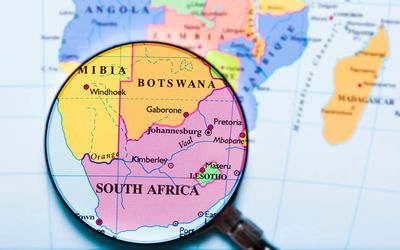
Picture: THINKSTOCK
THE big news in March will be the release of SA’s official GDP figure for 2015, as well as annual statistical revisions to previous GDP figures going back several years.
The SA economy narrowly avoided entering a recession in the third quarter of 2015, recovering to post positive quarter-on-quarter growth of 0.7% after a contraction of 1.3% in the second quarter.
However, on a year-on-year basis, SA achieved real GDP growth of just 1% in the third quarter — its slowest rate since the recession of 2009.
The Reuters consensus expectation is that fourth-quarter growth will also average about 1%, bringing the growth figure for the year as a whole to just 1.3%.
The data will be released by Stats SA on March 1.
The global economy also experienced weak growth in 2015, with the slowdown particularly marked across emerging markets, which have borne the brunt of the collapse in commodity prices, explains Investec chief economist Annabel Bishop. "SA has been heavily influenced by these conditions, with industrial production falling."
At the same time, SA’s agriculture sector has been afflicted by the worst drought in decades, while consumer demand has begun to slow due to falling confidence amid higher taxes and interest rates. These conditions are likely to persist in 2016, she warns.
The consensus is that the SA economy will grow by just 0.9% this year, rising to 1.7% in 2017.
Local manufacturing and mining data released last month confirm the economy is stagnant but not collapsing, though the risks remain to the downside.
BNP Paribas Securities economist Jeffrey Schultz notes that the manufacturing sector’s underlying growth momentum remains poor and likely acted as a drag on growth in the final quarter of last year.
"This does not bode particularly well for fourth-quarter production-side GDP growth figures due on March 1, given that the manufacturing industry contributes more than 13% to the country’s gross value added," he says.
Annual growth in manufacturing production has decelerated steadily from 4.6% y/y in 2010 to 1.3% y/y in 2013. For the past two years, the sector has been unable to grow at all, posting year-on-year growth of 0.1% in 2014 and 0% last year.
Unfortunately, the prospects for 2016 do not look any better. SA’s manufacturing PMI slipped back to the global financial crisis level of 43.5 index points in January. The index has been below the 50 neutral mark for six consecutive months.
"Faltering global and domestic demand, weaker commodity prices and manufacturing business confidence which remains at crisis lows are all unlikely to see a turnaround in SA’s supply-side growth fortunes anytime soon, in spite of the weaker rand helping to cushion some of the blow to larger, more export-oriented manufacturers," says Schultz.
Though there was a marginal increase in the Reserve Bank’s leading business cycle indicator in November, the trend remains negative, consistent with the subdued outlook.
In addition, the Rand Merchant Bank/Bureau for Economic Research business confidence index declined in the fourth quarter of 2015 to its lowest level in five years.
The continuing drought also means that the agricultural sector is likely to contract.
Underlying the bleak growth outlook is continued low growth in gross fixed capital formation, with private sector investment contracting in the third quarter. The prospects for formal sector employment growth therefore remain bleak.
The consumption side of the economy is not expected to fare much better.
The collapse in consumer confidence bodes ill for GDP growth this year, due to its strong correlation with household consumption expenditure. The latter contributes roughly 61% to GDP growth.
"The latest reading of consumer confidence shows a very depressed economic outlook index reading, as households’ sentiment about the future of the economy deteriorated dramatically," notes Bishop. "Higher taxes and interest rates will exacerbate this depressed outlook, weakening economic growth as consumers constrain spending growth."
She estimates that the odds of a recession developing this year are about 40%.
The risks of the drought, together with an extremely hawkish monetary policy stance and the fiscal necessity to extract higher taxes, will cause households, and therefore the economy, to battle.
"Indeed, without a turnaround in the current environment that SA businesses face, particularly an improvement in the ease of doing business, it is difficult to see how economic growth will avoid shifting down towards 0% this year, and so ultimately risking recession," says Bishop.
Just how hawkish the monetary policy stance will be will become clearer on March 17 when the Reserve Bank’s monetary policy committee (MPC) holds its second meeting of the year.
Following the steep deterioration of the Bank’s inflation forecast and the MPC’s 50 basis points (bp) repo rate hike in January, the big question is whether the Bank will continue to hike in such large increments.
Nedbank’s economic unit expects a 25bp hike at every MPC meeting until mid-2016 in order to tackle rising prices in the economy. "This will negatively impact growth further as demand is squeezed and businesses find it increasingly difficult to operate in a stagflationary environment," it warns.
As ever, the MPC will be watching international developments closely. By the time it meets, it will have had the benefit of the outcome of the European Central Bank’s (ECB) meeting on March 10, as well as the US Federal Open Market Committee (FOMC) meeting on March 15-16.
RMB currency strategist John Cairns expects the ECB to ease policy further, through a rate cut or more quantitative easing.
The Fed is widely expected to hold off any further hikes for much of the first half of the year, given evidence that the US economy may be slowing.
Speaking before the US Congress last month, Fed chair Janet Yellen remained optimistic about the state of the US economy, saying the FOMC’s base case was still for moderate rate hikes.
However, she conceded that international developments, especially China’s slowdown, pose an increasing downside risk to the US economy. This would affect the Fed’s ability to raise rates in a meaningful way.
"Despite not closing the door on a March hike, markets will be even more convinced that the current hiking cycle may almost be over," says RMB’s Deon Kohlmeyer.
According to RMB, Fed futures dropped marginally after the speech and now price in just a 20% probability of a hike this year. Greater clarity will be provided at the Fed’s March meeting, where Fed members will individually specify what they expect the future path of the Fed rate to be (the so-called "dot plot forecast").
Nedbank anticipates a material flattening of the Fed’s dot plot forecast over the next two years in response to slower global growth and a more uncertain outlook.
A less aggressive US hiking path should be good for the rand and the SA economy, easing pressure on the MPC to raise rates as aggressively to maintain the yield attraction of the rand.
However, in so far as a muted Fed is indicative of slowing global growth, weak global demand and flat commodity prices, the SA economy can be expected to continue to struggle.


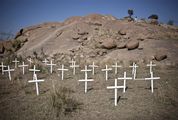
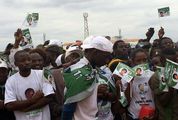


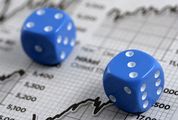

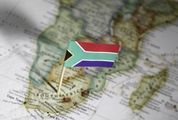
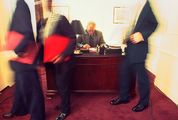
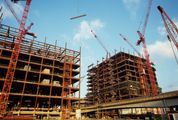


 Read the latest edition of Investors Monthly, with in-depth features, analysis and opinion
Read the latest edition of Investors Monthly, with in-depth features, analysis and opinion






